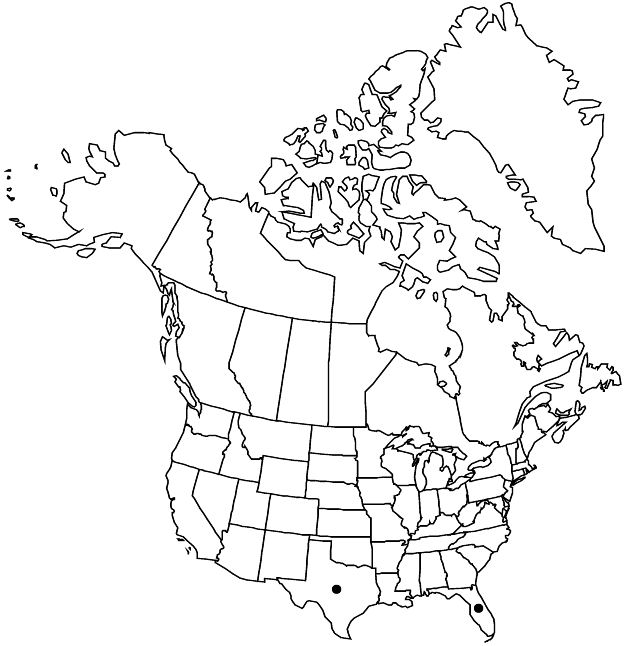Hibiscus radiatus
Diss. 3: 150, plate 54, fig. 2. 1787.
Herbs or subshrubs, erect or decumbent, to 1.5 (–2) m, herbage usually glabrous, sometimes with prickles or simple hairs. Stems also with line of fine, curved hairs. Leaves: stipules linearlanceolate, 10–16 mm, ciliate; petiole mostly 2/3 to equaling blade, with fine, curved hairs adaxially, sometimes sparingly prickly; blade broadly to transversely triangular-ovate, mostly 5-fid, 4.5–15 × 6–17 cm, base truncate or broadly and shallowly cordate, margins serrate, apex acuminate, segments lanceolate, surfaces glabrous but veins sometimes with retrorse prickles abaxially, nectary sometimes present abaxially on midvein near base. Inflorescences solitary flowers in axils of distal leaves. Pedicels jointed near middle, to 1.5 cm, prickly distal to joint; involucellar bractlets 8–10, flattened or canaliculate, 1–1.8 cm, margins setose, apex simple, 2-fid, or appendaged, spreading in flower to reflexed in fruit. Flowers horizontal or ascending; calyx divided 2/3+ length, cylindric-campanulate, 1.5–2.5 cm, accrescent, lobes narrowly triangular, with 3 prominent, setose ribs, 2 marginal, 1 medial, these often darker and with stinging bristly hairs, apices acuminate-attenuate, nectary absent; corolla rotate, petals usually dark red to rose-purple, rarely yellow, with dark purple basally, asymmetrically obovate, 3.5–7 × 3–5.5 cm, margins repand, finely hairy abaxially where exposed in bud; staminal column straight, maroon, 2.4–3.5 cm, bearing filaments nearly throughout, free portion of filaments not secund, mostly 1.5–2.5 mm; pollen dull yellow; styles maroon, 1.5–3 mm; stigmas dark maroon. Capsules pinkish brown, ovoid, 1.8–2.5 cm, apex acute, apiculate, antrorsely hispid, hairs readily deciduous, simple. Seeds dark olivaceous, with fine, raised, concentric lines, angulately reniform-ovoid, 4.2–4.8 mm, moderately verrucose-lepidote, scales striate-fimbriate. 2n = 72 (Trinidad, where cultivated).
Phenology: Flowering fall.
Habitat: Disturbed sites
Elevation: 0–80 m
Distribution

Introduced; Fla., Tex., Asia (India), also in Mexico, West Indies, Central America, South America, elsewhere in s Asia, Africa, Australia
Discussion
Hibiscus radiatus may have originated in India as a garden hybrid between H. cannabinus Linnaeus and H. surattensis Linnaeus and may not exist anywhere as a native (F. D. Wilson 1994; Wilson and M. Y. Menzel 1964). Other sources (for example, J. van Borssum Waalkes 1966) state that it is native to southern and southeastern Asia. It was originally grown in North America for its potential as a fiber crop.
Hibiscus cannabinus in the sense of J. K. Small (1933) pertains here.
Selected References
None.
Lower Taxa
"fine" is not a number. "fine" is not a number.